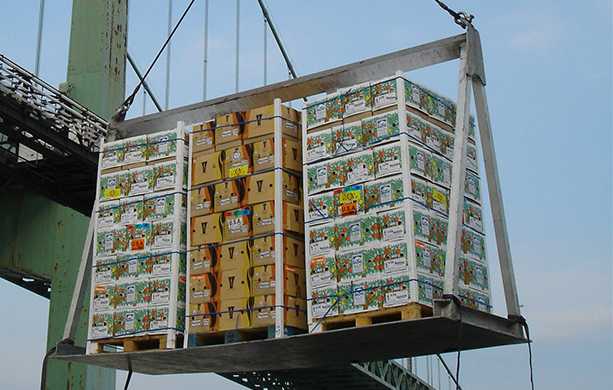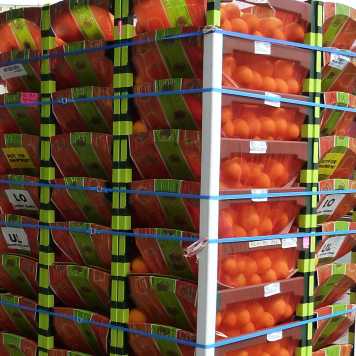Keeping oranges cool: New studies from PACKCHAIN project
Two new studies of the WFSC member group of Prof. Defraeye investigate how fresh fruit temperature and quality change during the refrigerated storage and transport in the citrus export pathway from South Africa to Europe.

Temperature is the most important factor affecting fresh produce quality change. Cooling down fresh fruit after harvest and keeping them cool during transport and storage is essential to preserve produce quality. The WFSC Research Programs project “Eco-smart ventilated packaging for fresh fruit using virtual cold chains” (PACKCHAIN) investigates how to improve the cooling performance during the entire cold chain. The project uses different approaches, from modeling to full-scale experiments in commercial operations.
In the recent study published in Computers and Electronics in Agriculture, lead author Dr. Wentao Wu developed a new method, the virtual cold chain (VCC), to predict the temperature and quality loss of packaged fresh fruit, down to each individual fruit, throughout the entire cold chain. The method, based on computational fluid dynamics and kinetic quality modeling, is a useful tool to identify the most efficient cold chain strategy, and can be applied for larger cargo ensembles, such as in a pallet.
Using this method, quality loss among individual fruits was found to vary up to 11% within a single carton. Researchers also compared quality loss among cold chain scenarios, i.e. different combinations of temperature and airflow during the cold chain unit operations (precooling after harvest, refrigerated transport, and cold storage). Quality loss was up to 23% larger in a cold chain without precooling than with precooling.
In another study published in Biosystems Engineering, lead author Dr. Wu and colleagues investigated the impact of packaging design on cooling rate and heterogeneity during forced-air cooling (FAC), a type of pre-cooling where cold air is drawn through pallets via ventilation holes in the stacked cartons. This time, they conducted a full-scale experiment in a commercial facility, using sensors to measure the fruit pulp temperature during commercial operations.
The results showed that cooling heterogeneity mainly occurred along the flow direction through the pallet. Packaging design influenced cooling rate: Opentop cartons cooled up to 42% faster than Supervent cartons. Also, fruit wrapping increased the cooling heterogeneity in the pallets. The study highlights the importance of full-scale experiments to assess real cooling performance in commercial facilities. These results can directly help the fruit industry to improve their operations.
Read the full article “Virtual cold chain method to model the postharvest temperature history and quality evolution of fresh fruit – A case study for citrus fruit packed in a single carton” in Computers and Electronics in Agriculture external pageherecall_made
Read the full article “Full-scale experiments in forced-air precoolers for citrus fruit: Impact of packaging design and fruit size on cooling rate and heterogeneity” in Biosystems Engineering external pageherecall_made

The papers are an output of the WFSC Research Program project “Eco-smart ventilated packaging for fresh fruit using virtual cold chains” (PACKCHAIN). For more information on the project, visit the project page.
